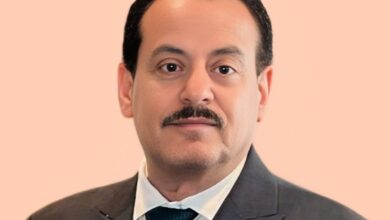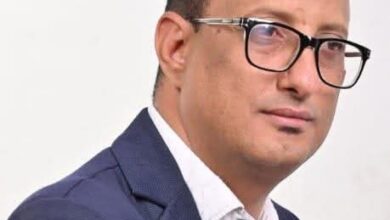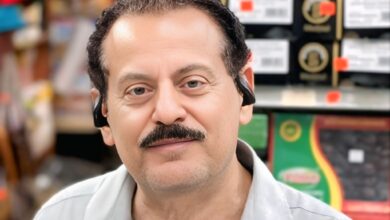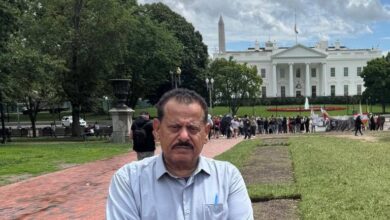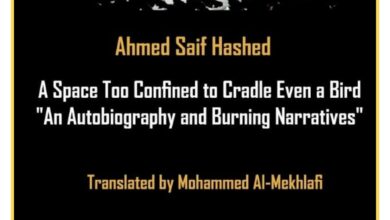Volgograd
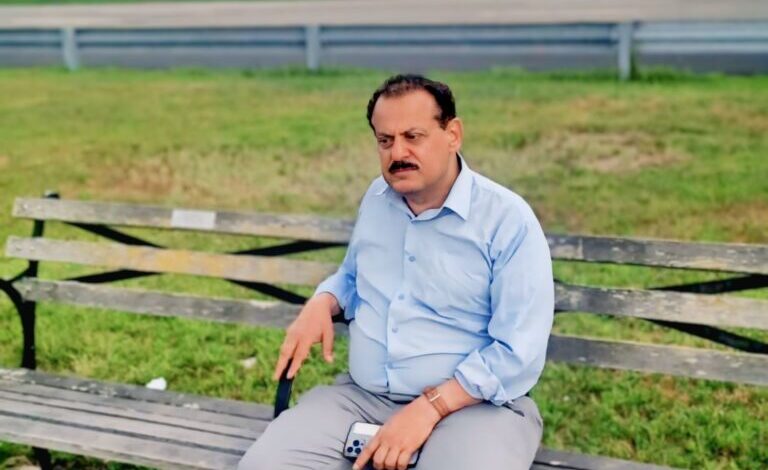
Yemeni mp
Ahmed Saif Hashed
Our second destination, according to the itinerary, was the city of “Volgograd,” located over a thousand kilometers from the capital, Moscow. The name “Stalingrad” became widely known during World War II, as it witnessed some of the most significant battles, lasting approximately six months according to various sources. The human casualties reached around two million, leading some to classify it as one of the bloodiest battles in the history of warfare.
It is essential, from a contrasting perspective, to highlight some of the horrors of those wars and the catastrophic results they leave behind. During World War II, the United States dropped two atomic bombs on the Japanese cities of “Hiroshima” and “Nagasaki,” resulting in an immediate death toll of over 120,000, with more than double that number succumbing later to the effects of nuclear radiation, not to mention the injured. Most of the victims were civilians, and over 90% of the buildings and infrastructure in both cities were destroyed.
Wars are terrifying and grotesque in ways that surpass imagination, and sometimes even perception. A Japanese woman who survived one of the nuclear explosions recounted her experience:
“I was twelve years old… I saw a flash like lightning, or what seemed like tens of thousands of lightning strikes lighting up at once, followed by a tremendous explosion. Suddenly, darkness enveloped the place. When I regained consciousness, I found my hair wilted, my clothes torn, my skin peeling off my body, my flesh exposed, and my bones visible. Everyone was suffering from severe burns, crying and screaming, wandering like a procession of ghosts. Our city was cloaked in utter darkness after it had just been alive.” (Source: Wikipedia)
* * *
In this context, we can take a moment to raise an objective critique with an ethical and humanitarian dimension concerning wars, including the conflict we are experiencing here in Yemen. It is one of the dirty wars we endure while the world’s conscience remains unmoved, failing to act seriously to stop it, even though it could have prevented it from occurring in the first place.
We pause here before the questions raised by Dostoevsky’s novel “Crime and Punishment”: Why do we condemn the miserable student who kills the usurer in the narrative, yet not condemn the leader who sends his soldiers to death for the sake of his own glory?
Why does Napoleon have the right to kill, and America the right to drop nuclear bombs, while Raskolnikov is not permitted to kill the usurer, who with her wealth could free him—and perhaps many others—from poverty?
Why do we find ourselves inclined, while reading the novel, to side with Raskolnikov, the murderer of the usurer, urging him to surrender himself for justice and moral reasons? We hear the call: “Awake… rise this very moment, stand at the crossroads, and bow… kiss the earth you have defiled. Then, kneel before the world on all fours, and proclaim loudly to everyone… Yes, yes, I have killed.”
Yet, we do not demand that those who have slaughtered thousands, hundreds of thousands, and millions do the same as Raskolnikov! Why do we advocate for Raskolnikov’s costly penance through hard labor for the rest of his life, while refraining from demanding punishment for those who have driven countless human beings into the hell of wars, death, and famine?
What about those who have destroyed their own peoples, impoverished them, or oppressed them for ideological reasons, believing they possess absolute truth, or claiming they are the rightful owners of justice, with their actions deemed legitimate and beyond reproach? What of those who orchestrated wars, nurtured them out of greed, vengeance, or the desire for glory, or to reclaim lost glory?
These questions are not intended to justify crime in any form, but rather to inquire: Why this profound absence of justice? Why does justice not reach the grand criminals as it does the lesser ones?
What we need is justice for all. We require justice that addresses the major criminals before the minor ones, to deter crime and limit the atrocities being committed, ensuring that the scales and standards of justice we seek remain intact.
In this regard, we can also speak of the genocide of the Native Americans, the indigenous peoples of America, and the subjugation of those who remain. We can discuss the war crimes committed by the United States in Vietnam, Iraq, and elsewhere, as well as the war crimes perpetrated by the French in Algeria and the Turks against the Armenians. All such wars involve perpetrators who refuse to compensate those nations or even apologize for the horrific wars these countries have waged against them.
* * *
Returning to the city we visited, awarded the title “Hero City,” it was included in our itinerary due to its significant military history during World War II, as it marked a turning point in the war, altering the balance in favor of the Soviet Union.
“Volgograd” is its old name, changed in 1925 to “Stalingrad.” After Stalin’s death and the decline of “Stalinism,” as labeled by his successor Nikita Khrushchev, the city reverted to its original name “Volgograd,” closely associated with the Volga River, stretching along the right bank of the river for 30 kilometers
Oh my God… What is that I see in the distance?! Who is this woman whose head touches the sky, wielding a sword against the heavens? What is her story? Which artist crafted this masterpiece? How did he accomplish it? And how long did it take to achieve this magnificent form we behold?
The first thing that captivates you upon arriving at the outskirts of the city is the grand memorial visible from afar—a statue of a woman brandishing a sword, known as “Motherland,” perched on a high hill. It stands as a towering figure, overlooking the city with majesty, dignity, and valor.
At that time, this statue was the tallest sculpture in the world, reaching a height of 85 meters, erected in memory of the victims of the Battle of Stalingrad, fought between the Soviet Union and Germany in 1942 and 1943. The statue of the woman holding the sword became a symbol of the city.
Among the city’s landmarks is what is known as the “Celestial Sphere,” along with memorials, statues, museums, theaters, concert halls, and artworks. It is also home to factories, facilities, and urban development, as well as the Volga River, the largest and most abundant river in all of Europe. The name “Volga,” according to sources, means “river of the east,” a title bestowed by the river basin’s inhabitants since ancient times, stretching over 3,500 kilometers. As for “grad,” associated with the river’s name, it means “city.”
* * *
Under the Celestial Sphere, we took our seats. The lights were dimmed… An extraordinary phenomenon transported us to a realm of wonder and amazement. I forgot I was seated in a chair; I forgot who I was and where I came from! I felt as if I were swimming in space, like a star, a planet, or an astronaut.
I became lost in the cosmos, disoriented by the vastness around me, until I lost my sense of self and the familiar directions of east, west, north, and south. Everything here revolved… spinning around me until I felt dizzy.
An entire hour was spent soaring among stars, planets, galaxies, and universes—a cosmic knowledge that I shall remember for the rest of my days.
* * *
We visited the Panorama Museum, which depicts the “Battle of Stalingrad” during World War II, showcasing a summary of resilience and valor, and the glory of victory. Amid the many epics and heroics captured in photographs, statues, and remnants of war, what caught my eye were the impressive portraits of the Allied leaders—Churchill, Roosevelt, and Stalin. These were the victorious heads of state who gathered post-war to divide the world among themselves.
The world became a dominion for the victors; territories were laid out on the table as spoils of war and influence, igniting a new kind of struggle among them—a Cold War that lasted for decades.
Many nations paid heavy and costly prices, and some continue to pay for the victors even to this day. Even many “deceived” communist parties in European countries like Britain and France were shocked by the results of this division, stunned to feel abandoned, realizing that the spoils of war were shared among the victors. It was jarring to see great principles reduced to mere empty words when it came to plunder. The reality was starkly different, as the world was carved up among the victors of this catastrophic and horrific war against the peoples of the earth.
We also visited the remnants of a building known as “Pavlov’s House,” which witnessed an extraordinary and legendary resistance against the occupiers. A bastion of defenders stood valiantly against the invaders, engaging in fierce battles for control. Ultimately, those who held out triumphed, and the building still retains many of its walls that narrate the legend of resistance and resilience of this heroic city—a scene reflecting the ferocity of war and the bravery of its defenders.
* * *


